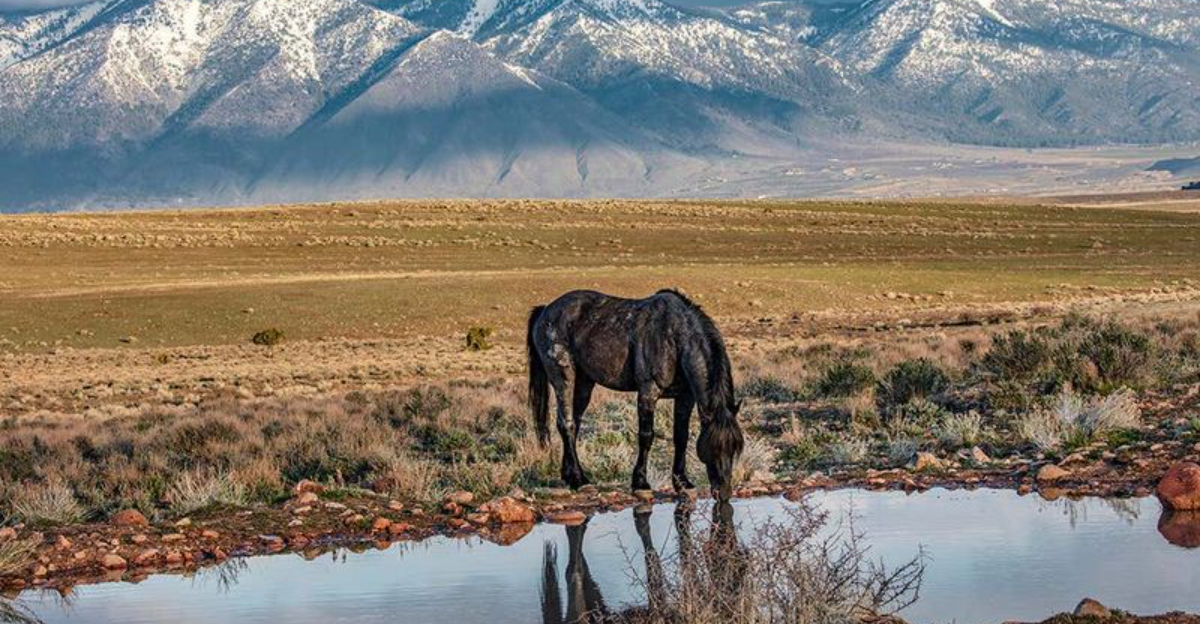Nevada’s vast landscapes shelter one of America’s most iconic symbols – wild horses.
There’s something magical about spotting these wild creatures where they truly belong—and Arizona gives you plenty of chances to do just that.
Descended from horses released or escaped by settlers, miners, and Native Americans, these free-roaming horses embody a spirit of freedom and resilience. Ready to explore where these living legends thrive?
1. Virginia Range: Urban-Adjacent Wild Wonders
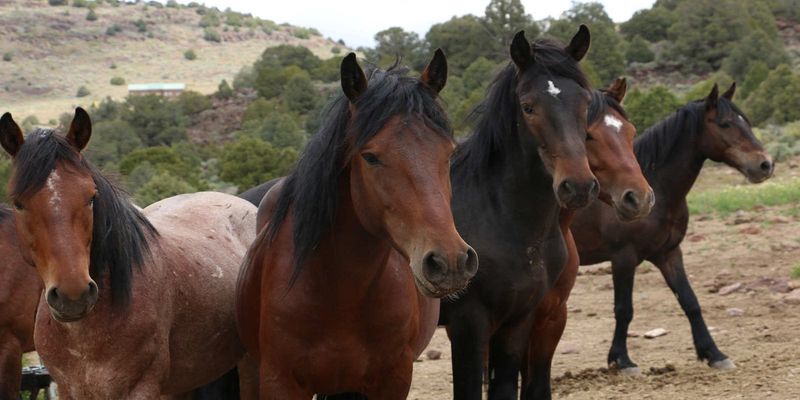
Head east from Reno and you’ll find one of the best places in Nevada to spot wild horses—without venturing too far off the beaten path. These horses practically live in suburbia’s backyard! I’ve watched mares with foals grazing alongside highway 341 while commuters zoom past, completely unaware of the wildlife spectacle.
The Virginia Range herd faces unique challenges due to their proximity to human development. Water sources are limited, especially during drought years, and highway crossings pose serious dangers.
Visit at dawn or dusk for the best viewing opportunities. Bring binoculars and stay in your vehicle when possible. Remember these aren’t zoo animals – they deserve space and respect as wild creatures managing a delicate existence alongside our expanding urban footprint.
2. New Pass-Ravenswood Herd Management Area: Desert Survivors
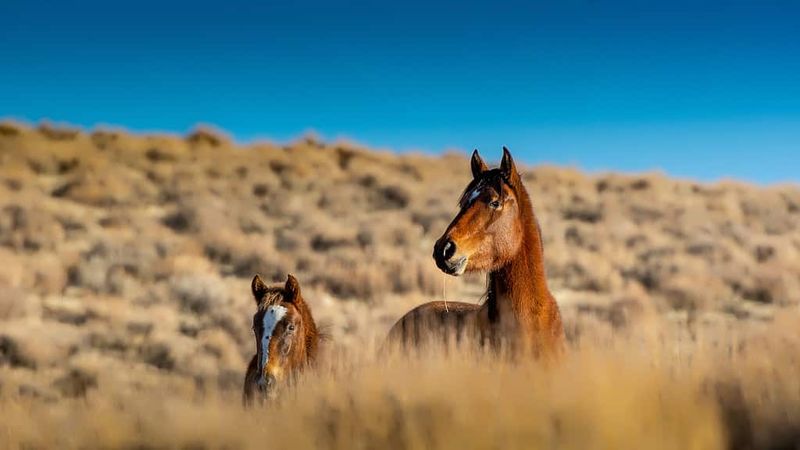
Located between Austin and Fallon, this region is home to resilient horses that have truly mastered the art of desert survival. Their coats shimmer with health despite the harsh conditions – a testament to their remarkable adaptability.
Summer temperatures regularly exceed 100°F, yet these resourceful equines know exactly where to find water and shade. The Bureau of Land Management maintains this area specifically for wild horse conservation, monitoring population levels to prevent overgrazing.
Four-wheel drive vehicles are essential for accessing the remote viewing spots. Pack extra water and emergency supplies. The horses here tend to be more skittish than those near populated areas, so ultra-zoom lenses are your best photography tools. My favorite viewing spot is near the western boundary where horses gather at a spring in late afternoon.
3. Red Rock Herd Management Area: Colorful Canyon Dwellers
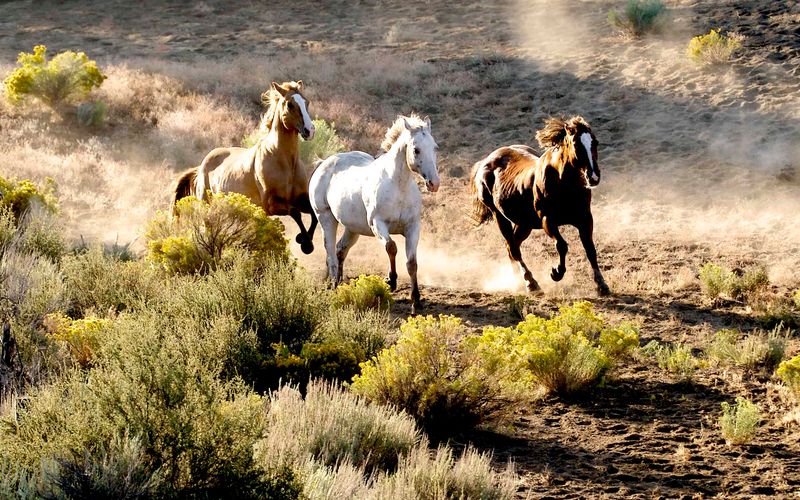
Against the stunning red and orange striped canyon walls, these horses create a photographer’s dream scene. The dramatic backdrop makes this my absolute favorite place to photograph wild horses in Nevada.
Many of the Red Rock horses display distinctive pinto coloration patterns – likely inherited from ranch stock that escaped decades ago. They’ve adapted to the unique microclimate created by the canyons, finding water in places visitors would never notice.
Spring brings the most reliable viewing opportunities when new foals arrive. The horses frequently visit water sources near the Cold Creek area. Keep your distance and avoid blocking their path to water. These horses have established territories and movement patterns that shouldn’t be disrupted by eager photographers or visitors.
4. Lake Mead National Recreation Area: Water-Loving Mustangs
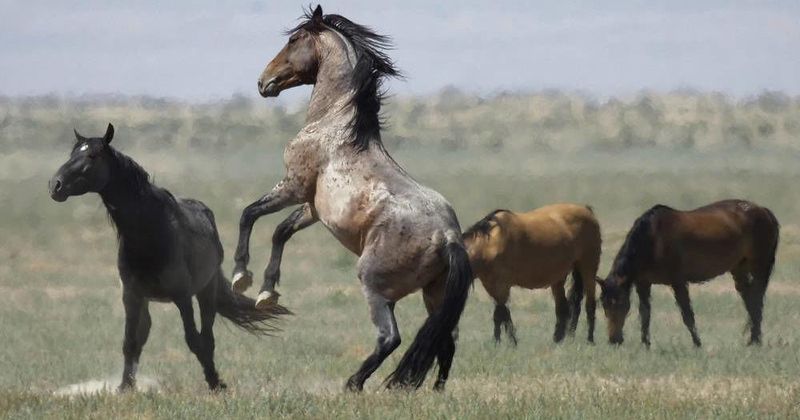
Wild horses near water? You bet! While we typically picture mustangs in dry landscapes, the Lake Mead herds have adapted to life with abundant water access. These horses often wade into shallow areas during hot summer months, creating spectacular scenes.
The herds here benefit from tourism indirectly – more human presence means fewer predators. However, visitors sometimes illegally feed the horses, creating dangerous dependencies and changing natural behaviors.
Early morning boat tours offer incredible viewing opportunities without disturbing the animals. I once watched a stallion lead his family band down a steep embankment for their morning drink – they moved like liquid bronze in the sunrise light. Stay at least 50 yards away and use binoculars for close-up views rather than approaching.
5. Antelope Valley: Northern Nevada’s Horse Haven
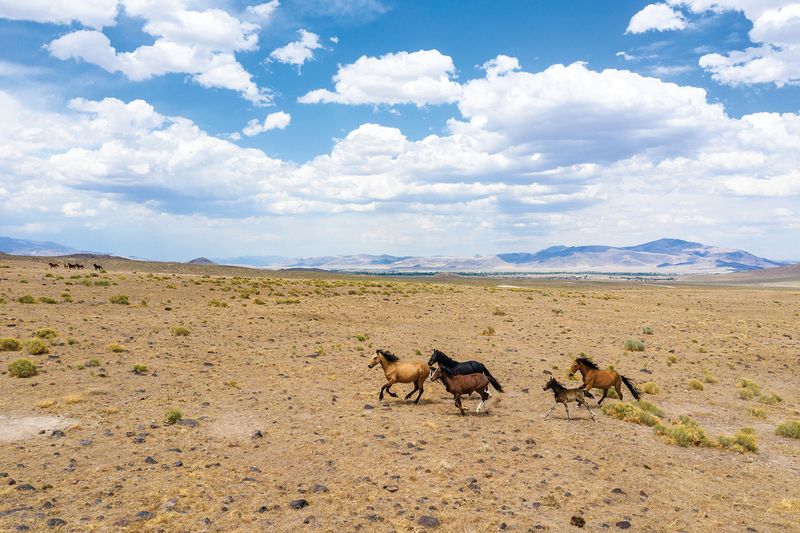
Windswept grasslands stretch for miles in this remote northern valley where some of Nevada’s healthiest horse herds thrive. The abundant bunchgrass and seasonal streams create ideal habitat for these magnificent animals.
What makes this area special is the minimal fencing – horses can travel their traditional migration routes relatively unimpeded. Local ranchers have worked with conservation groups to create horse-friendly passage points where necessary.
Fall brings spectacular viewing as the horses fatten up for winter and their coats develop thick, glossy layers. Bring a spotting scope – the open terrain means horses often spot humans from great distances and maintain their space. My last visit rewarded me with the sight of two bachelor stallions play-fighting against a backdrop of mountains painted with autumn colors.
6. Stone Cabin Herd Management Area: Ancient Bloodlines

Horse genetics experts believe these horses carry some of the purest Spanish colonial bloodlines in America. Their compact bodies, dished faces, and distinctive gaits reflect their ancient heritage.
The Stone Cabin HMA spans nearly 400,000 acres of some of Nevada’s most remote terrain. Natural springs dot the landscape, creating microhabitats where horses gather, especially during the heat of summer.
Winter offers surprisingly good viewing opportunities when horses descend from higher elevations. I recommend hiring a local guide who knows the territory – they can lead you to active horse areas while teaching you about their unique behaviors and history. Always give horses the right of way on roads and trails—they belong here, and we’re just guests in their ancient home.
7. Monitor Wild Horse Territory: High Mountain Mustangs
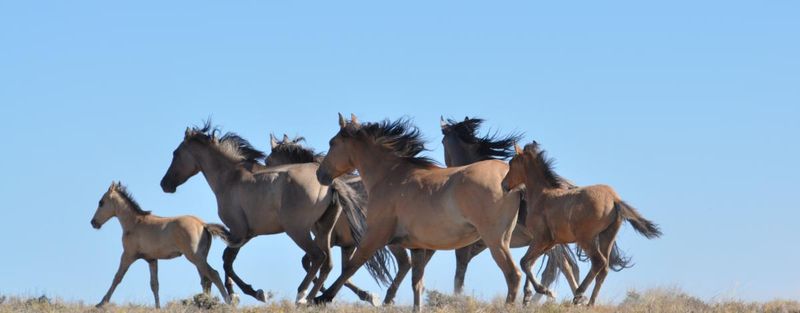
At elevations exceeding 8,000 feet, these hardy horses brave winter snowdrifts and summer thunderstorms in Nevada’s high country. Their thick winter coats and sturdy hooves allow them to thrive where domestic horses would struggle.
The Monitor horses share their range with elk, pronghorn, and occasional mountain lions. This natural predator pressure has kept the herd genetically strong – only the most resilient animals survive to pass on their traits.
Access requires serious off-road capability and wilderness navigation skills. I nearly got stranded here once when a summer cloudburst turned dirt roads into mud rivers within minutes! Plan multiday trips to maximize viewing chances. The horses’ coat colors match their surroundings – a testament to natural selection favoring camouflage in predator-rich environments.
8. Palomino Valley Wild Horse and Burro Center: Adoption Ambassadors
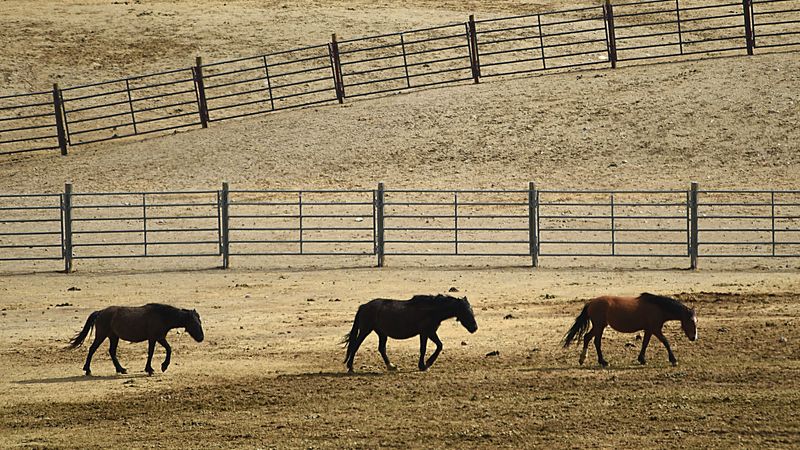
While not technically a wild herd, this facility offers guaranteed horse viewing and education about Nevada’s mustang management. Hundreds of gathered horses await adoption here, showcasing the diversity of Nevada’s wild equines.
The center serves as the BLM’s largest wild horse holding and adoption facility. Horses arrive from various herd management areas when populations exceed sustainable levels. Each horse carries distinctive traits from its home range – trained eyes can often identify which region a horse originated from.
Tours run Tuesday through Saturday, with adoption events scheduled throughout the year. My friend adopted a gorgeous buckskin mare from here who still shows her wild heritage through incredible endurance on trail rides. For those unable to venture into remote areas, this provides an accessible way to appreciate Nevada’s living legends up close.
